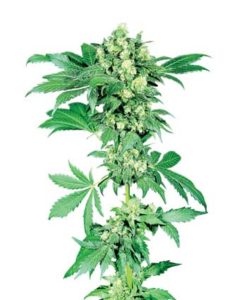 C. sativa and C. indica differ from each other in various key ways, in their natural state. Today, the extent of hybridisation found in common indoor varieties means that many of us will never experience a “true” Indica or Sativa, a problem that is increasing as Dutch and US-developed strains make their way back to the landrace areas such as Africa and South America.
C. sativa and C. indica differ from each other in various key ways, in their natural state. Today, the extent of hybridisation found in common indoor varieties means that many of us will never experience a “true” Indica or Sativa, a problem that is increasing as Dutch and US-developed strains make their way back to the landrace areas such as Africa and South America.
For indoor grows, hybridisation is hugely important as it leads to the development of strains that have the properties and benefits of both types. Indica cannabis strains are far more suitable for indoor grows, as it is smaller in height, yields bigger harvests and flowers earlier. Its effect is soporific or sedative, and leaves the user feeling “stoned”. Its flavour and scent is often described as earthy, musky, or spicy.
Cannabinoid ratio
Sativa can possess exceptionally fine qualities that render them ultra-desirable for the end-user. The cannabinoid ratio of some Sativa strains is unusually low in CBD and high in THC, meaning that their effect is “higher”: cerebral, “speedy” and energetic are adjectives typically attributed to them. The flavours and scents of Sativa strains are often highly appealing, and can be sweet and fruity, or sharp, tangy and astringent.
However, Sativa strains are temperamental and require great expertise to successfully grow indoors. They can require months of vegetative growth, and do not respond promptly to changes in light regime as with Indica strains. They can comfortably reach well over ten feet in height, and some varieties may reach 25 feet or taller. They also produce smaller harvests that are much lower in weight, and flowering itself can take anything from ten weeks to twenty-four!
Benefits of hybridisation
For this reason, hybridisation has enabled us to benefit from the qualities of both types. We now have strains that stay within a reasonable height and yield abundant harvests in relatively short times due to their Indica background, while still retaining the fruitiness and “high” of their pure Sativa ancestors. Furthermore, we can tweak and re-tweak these varieties to select for very specific traits to create medicinal cannabis strains, which can benefit those suffering from a range of debilitating illnesses and disorders.
As our plant-breeding expertise grows, alongside our increased insight into the vital functions of the endocannabinoid system (and how it plays a role in various diseases), we are producing increasingly targeted medicinal strains. However, we must be careful to preserve the integrity of the pure Indica and Sativa landraces and allow them to flourish as they traditionally have done, as if diversity is lost we may lose out on many desirable and important traits.




